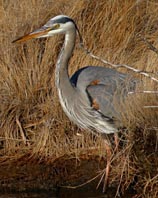Edwin B. Forsythe National Wildlife Refuge facts for kids
Quick facts for kids Edwin B. Forsythe National Wildlife Refuge |
|
|---|---|
|
IUCN Category IV (Habitat/Species Management Area)
|
|
| Location | Atlantic County, Ocean County, New Jersey, United States |
| Nearest city | Oceanville, New Jersey |
| Area | 47,437.17 acres (191.9714 km2) |
| Established | 1984 |
| Governing body | U.S. Fish and Wildlife Service |
| Website | Edwin B. Forsythe National Wildlife Refuge |
| Designated: | 18 December 1986 |
| Reference #: | 348 |
The Edwin B. Forsythe National Wildlife Refuge is a special protected area in southern New Jersey. It's located along the Atlantic coast, just north of Atlantic City. This refuge was created in 1984 to protect important wetlands and shallow bay areas. These habitats are vital for many birds that travel long distances.
The refuge was formed from two older protected areas. The Barnegat Division started in 1967 in Ocean County. The Brigantine Division began in 1939 near the Mullica River. These two parts are about 20 miles (32 km) apart.
Forsythe Refuge is a key spot along the Atlantic Flyway. This is like a superhighway in the sky for migrating birds. It's part of a bigger network of wildlife refuges across the country. The refuge is named after Edwin B. Forsythe, a conservationist and Congressman from New Jersey.
Contents
What is the Edwin B. Forsythe National Wildlife Refuge?
This refuge protects over 40,000 acres (162 km2) of coastal habitats in southern New Jersey. Most of this area is made up of tidal salt marsh. These are grassy areas flooded by ocean tides. They are perfect homes for thousands of ducks, geese, and shorebirds. These birds gather here during their spring and fall migrations. This makes the refuge a fantastic place for birdwatching and nature photography.
Special Protected Areas
About 6,000 acres (24 km2) of the refuge are called a wilderness area. This means public access is often limited or even not allowed. These areas include Holgate and Little Beach. They are two of the last natural, undeveloped beaches in New Jersey.
Rare birds like the piping plover raise their young on these beaches. To protect these fragile bird nests, Holgate Beach is closed to visitors during nesting season. Little Beach is closed all year, except for special research or education permits.
Forests and Wildlife
More than 3,000 acres (12 km2) of the refuge are woodlands. These forests have many different types of trees and plants. They provide homes for various animals. You might see songbirds, woodcock, white-tailed deer, and box turtles here.
How to Explore the Refuge
You can explore the refuge mainly by car or bicycle. There's an eight-mile (13 km) long driving trail. A brochure helps you spot different features along the way. If you prefer walking, there are four trails. They range from a short 1/4 mile (0.4 km) to 4 miles (6.4 km) long.
What About Pollution in the Refuge?
Scientists from the University of Pennsylvania and the British Geological Survey have studied the mud in the refuge. They looked for pollutants like certain chemicals and mercury. They found small amounts of these substances in the creek and marsh mud. The chemicals likely came from burning wood or coal, or from car traffic. This research helps us understand the health of the refuge's environment.



